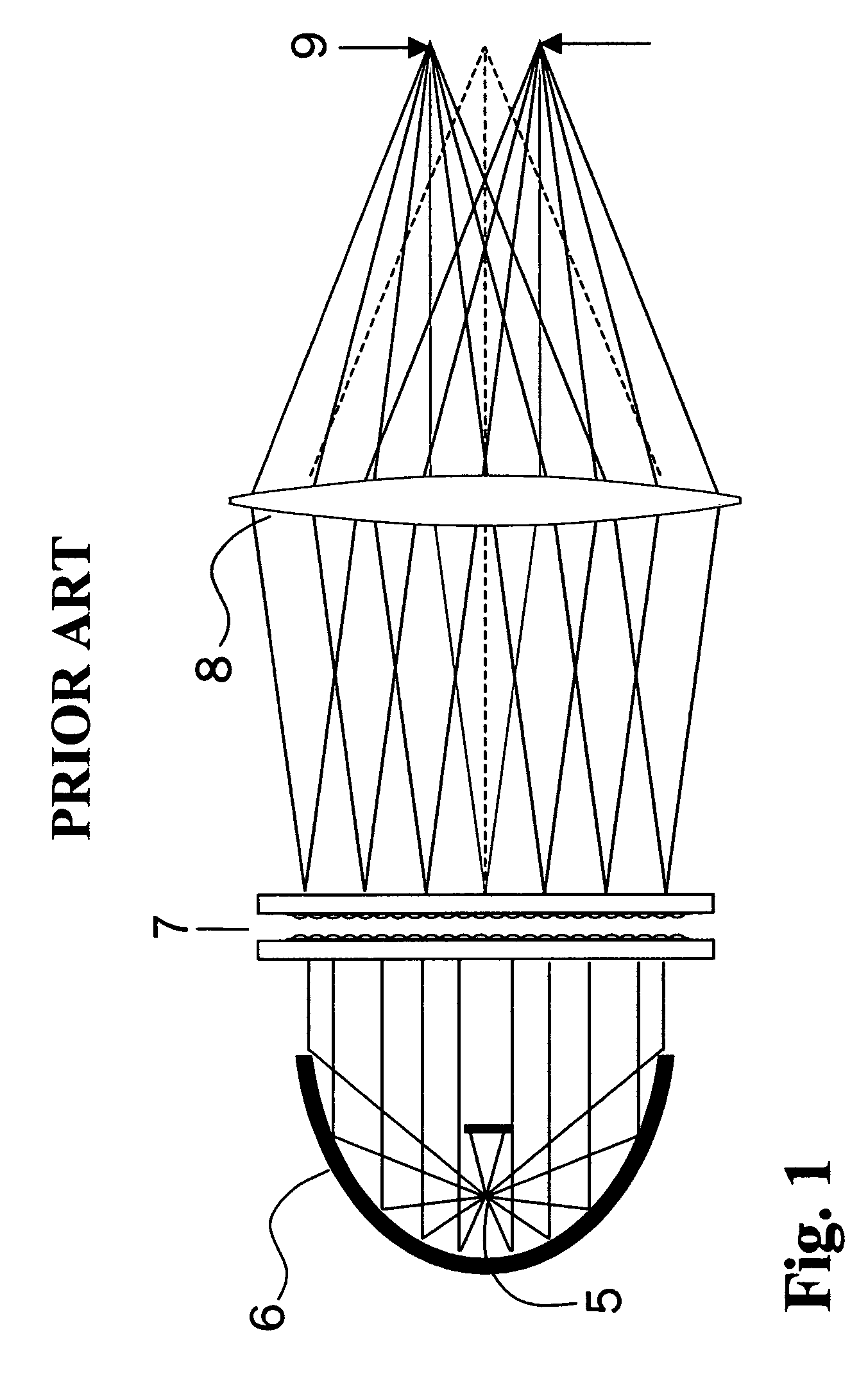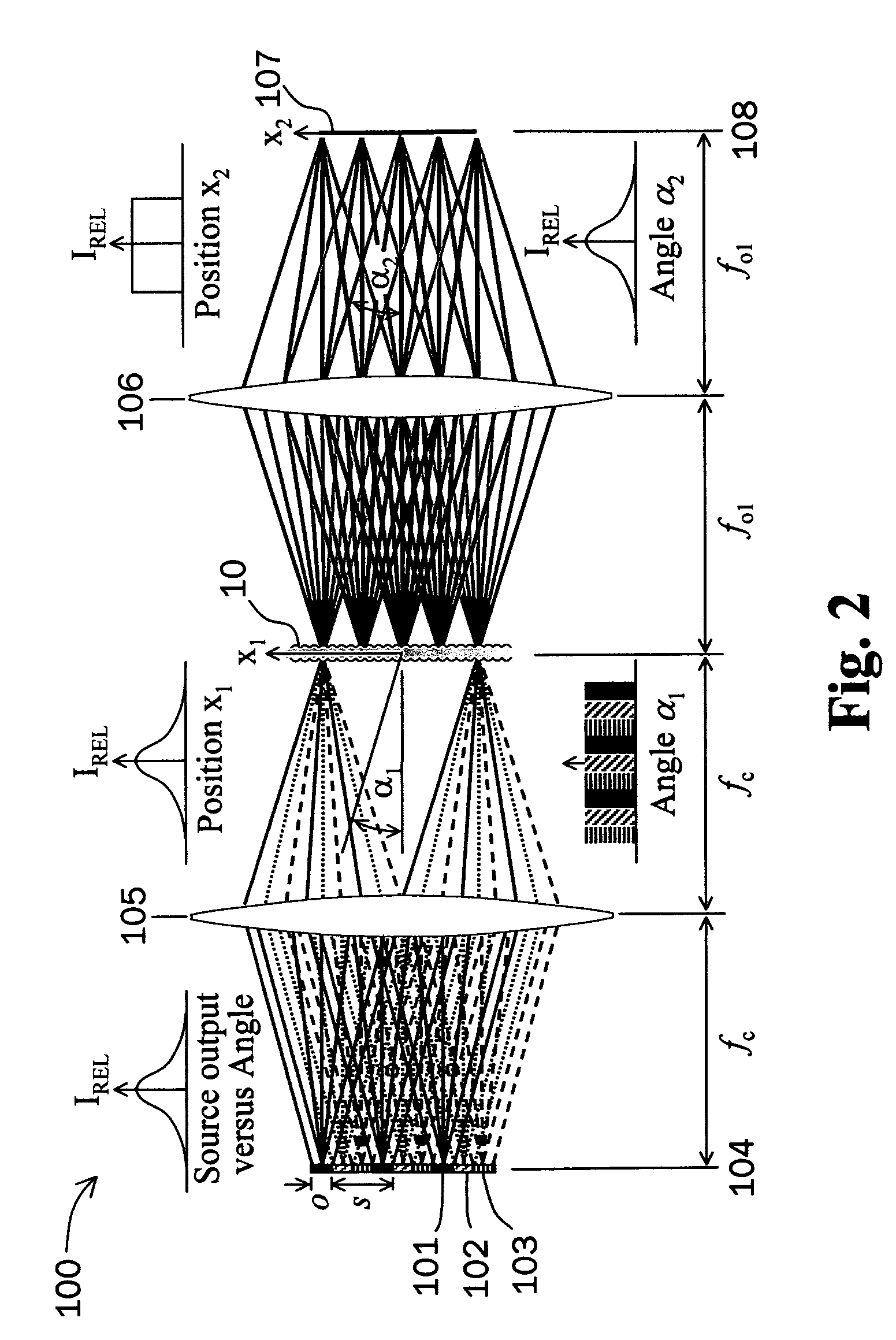Homogenizing optical sheet, method of manufacture, and illumination system
a technology of optical sheets and homogenizing sheets, applied in the field of homogenizing optical sheets, method of manufacture, and illumination systems, can solve the problems of reducing the contrast of the display system, affecting the light efficiency, and high voltage requirements of typical fluorescent backlights
- Summary
- Abstract
- Description
- Claims
- Application Information
AI Technical Summary
Benefits of technology
Problems solved by technology
Method used
Image
Examples
Embodiment Construction
)
[0064]Referring to the accompanying FIGS. there is shown an optical sheet 10 that exhibits the property of accepting light equal to or within a designed input acceptance cone angle, or Numerical Aperture, then redirecting the input light as output into a constant design exit cone, exiting substantially normal to the sheet surface such that the light intensity within the cone is substantially uniform in intensity versus angle. It should be noted that the optical sheet 10 can function for a continuum of wavelengths of visible light as well as ultraviolet, infrared, far-infrared, and other radiation wavelength ranges, depending on the choice of material used to form the sheet. Further, it should be noted that choice of a material exhibiting substantially high transparency and limited dispersion throughout a given spectrum provides for a radiation homogenizing optical sheet that functions substantially consistent for all wavelengths within such wavelength spectrum. For such case, the s...
PUM
| Property | Measurement | Unit |
|---|---|---|
| exit angles | aaaaa | aaaaa |
| exit angles | aaaaa | aaaaa |
| propagation distance | aaaaa | aaaaa |
Abstract
Description
Claims
Application Information
 Login to View More
Login to View More - R&D
- Intellectual Property
- Life Sciences
- Materials
- Tech Scout
- Unparalleled Data Quality
- Higher Quality Content
- 60% Fewer Hallucinations
Browse by: Latest US Patents, China's latest patents, Technical Efficacy Thesaurus, Application Domain, Technology Topic, Popular Technical Reports.
© 2025 PatSnap. All rights reserved.Legal|Privacy policy|Modern Slavery Act Transparency Statement|Sitemap|About US| Contact US: help@patsnap.com



